Cover Collection: Bold Women
As Laurel Thatcher Ulrich once said, “Well-behaved women seldom make history.” This collection of Saturday Evening Post images is a paean to strong women making a difference.
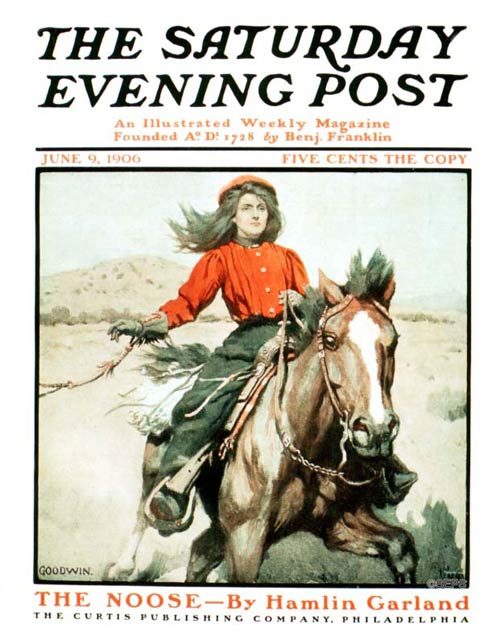
Philip R. Goodwin
June 9, 1906
Click to Enlarge
This cover illustrated a short story called “The Noose.” The cowgirl at the center of the story, Fan Blondell, “was already aware of her power, too, and walked among the rough men of her acquaintance with the step of an Amazonian queen, unafraid, unabashed.”
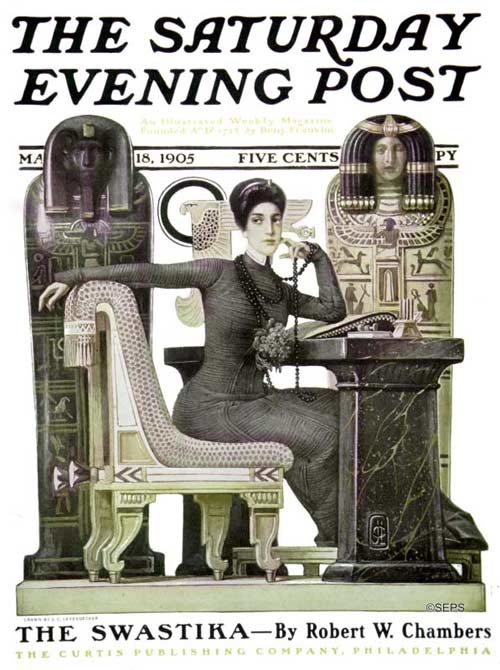
J.C. Leyendecker
March 18, 1905
Click to Enlarge
In the short story, “The Swastika” by Robert W. Chambers, stenographer Miss Grey turns out to have deeper knowledge and more intrigue than her employer expected. J.C. Leyendecker, one of the Post’s most highly regarded artists, created this Egyptian-themed cover to illustrate the story.
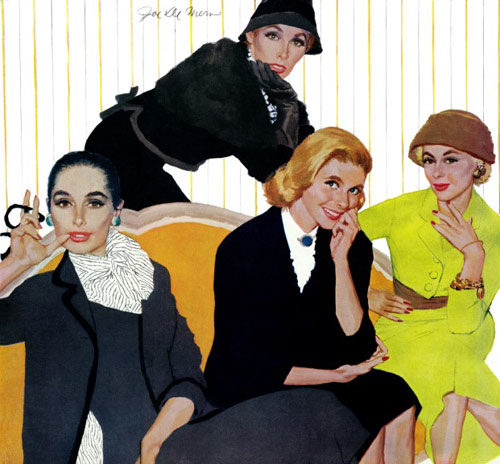
Joe De Mers
December 1, 1956
Click to Enlarge
Artist Joe De Mers illustrated “Her Big Moment” by Lee McGiffin. In it, four accomplished women return to their college reunion. De Mers captures the sleek glamour of the 1950s.
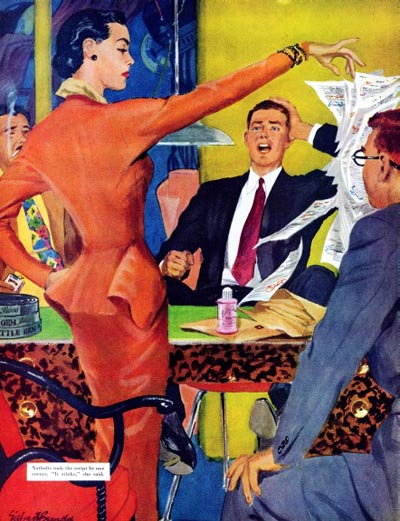
Gilbert Bundy
May 26, 1951
Click to Enlarge
This illustration accompanies a short story called “Petticoat Empire” by Edith Embury. In the story, Nathalie Wyman is a film producer: “She was the boss, the genius. No one ever disagreed with her — not if he wanted to keep his job.”
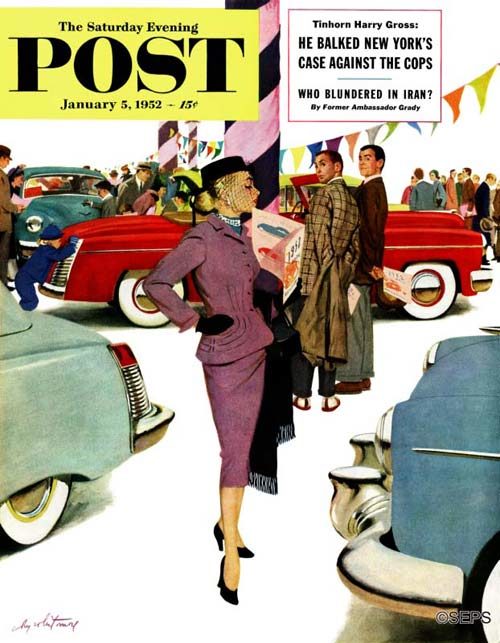
Coby Whitmore
January 5, 1952
Click to Enlarge
Artist Coby Whitmore was well known for his illustrations of confident women. This woman looks like she has already picked out her 1952 model, and will be shortly driving it off the showroom floor. It comes as no surprise that Whitmore had a fascination with cars. In the early 1950s, he designed the Fitch-Whitmore Le Mans Special with racecar driver John Fitch.
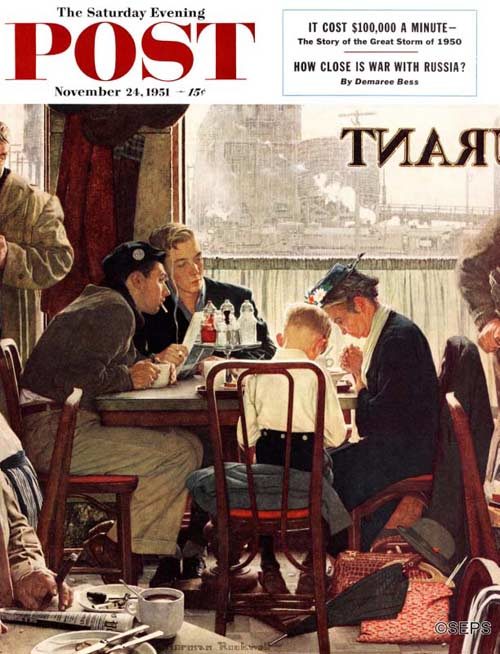
Norman Rockwell
November 24, 1951
Click to Enlarge
Boldness comes in all shapes and sizes; sometimes it means doing what you believe even when those around you don’t quite understand.
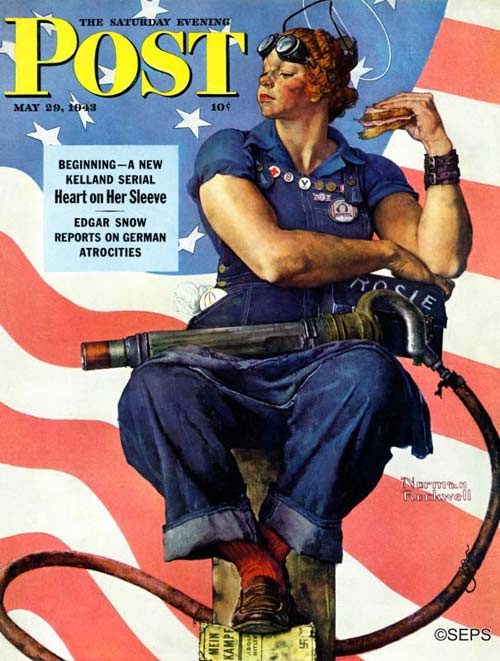
Norman Rockwell
May 29, 1943
Click to Enlarge
No gallery of bold women would be complete without Norman Rockwell’s beloved Rosie the Riveter. The model was Mary Doyle Keefe, a 19-year-old phone operator in Arlington, Vermont. During World War II, Rosie the Riveter toured the country raising money for the war bond drive. “I was very pleased that they could make all this money for the war.” Keefe said. “I am proud of this painting. It’s a symbol of what the women did for the war, to do their part.”
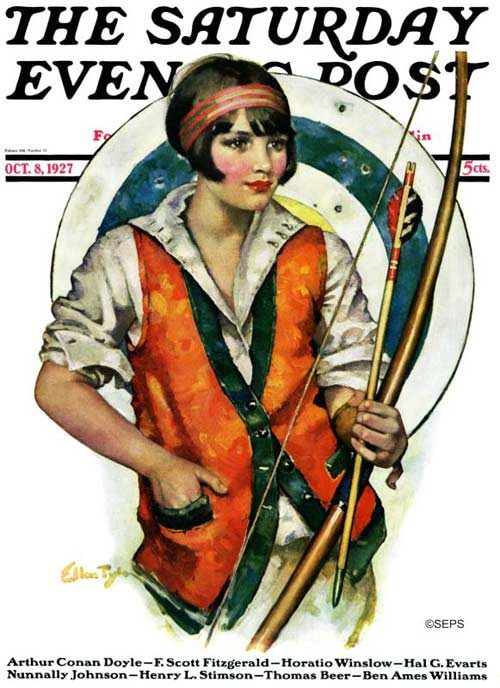
Ellen Pyle
October 8, 1927
Click to Enlarge
After her husband died, Ellen Pyle turned to painting to support her family. Her sister-in-law sent three of Ellen’s illustrations to The Saturday Evening Post in 1922, two of which were immediately selected by The Post’s famous editor, George Horace Lorimer. Over the course of the next decade-and-a-half, Pyle completed 40 covers for The Saturday Evening Post, including this archer.
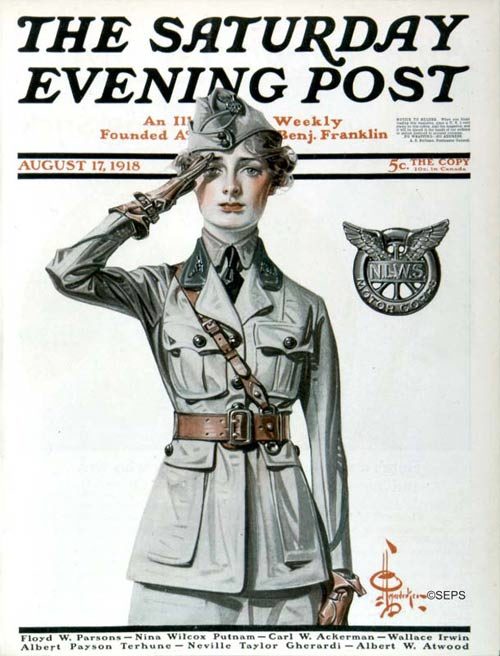
J.C. Leyendecker
August 17, 1918
Click to Enlarge
The American Red Cross Motor Corps were a group of women who aided the U.S. military in transporting troops and supplies during World War I. These women did everything from running canteens and military hospitals to caring for patients of the 1918 flu pandemic.
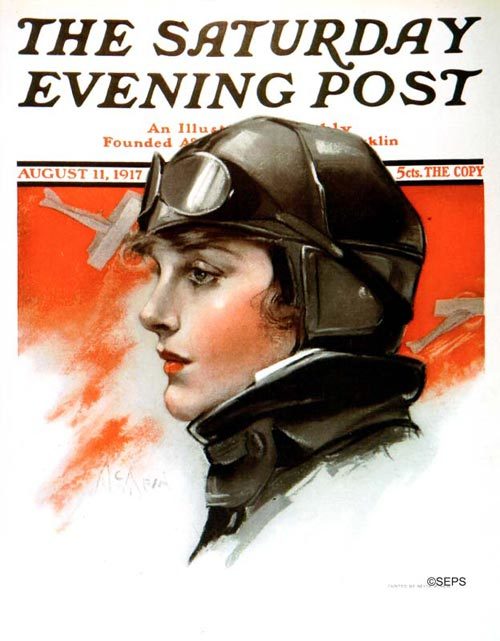
Neysa McMein
August 11, 1917
Click to Enlarge
Artist Neysa McMein was involved in the war efforts during World War I, travelling through Europe with Dorothy Parker to entertain the troops. She painted a number of wartime covers, including this pilot.
Classic Art: Leading Ladies
“It’s Me Darling—Your Husband!” – Joe De Mers
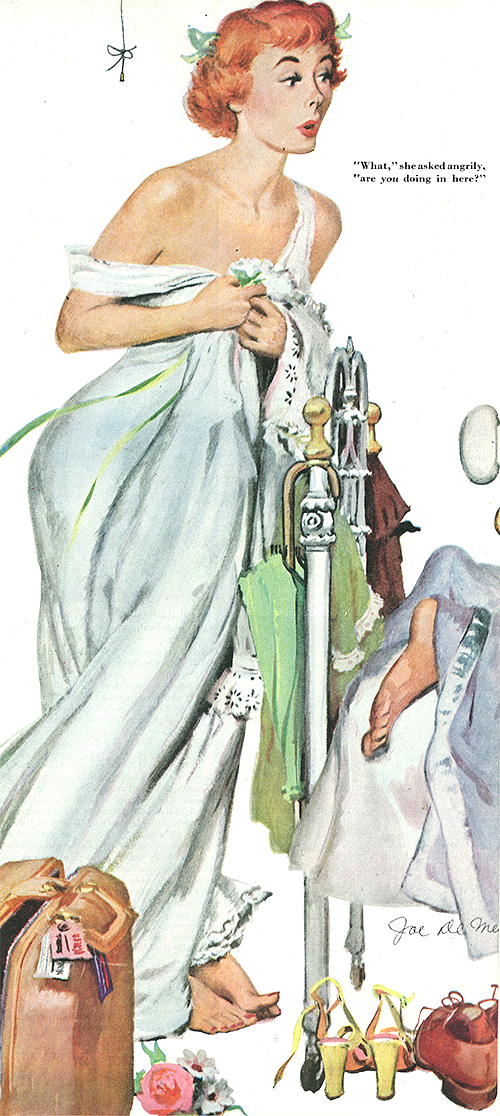
“He woke to see his wife looking at him in horror. It seemed she had no recollection of getting married.” Don’t you hate when that happens? From a 1949 story called, “It’s Me Darling—Your Husband!” this is one of the many enticing illustrations by artist Joe De Mers. We like to call them our “leading ladies.”
“Clever Women Are Dangerous Too” – Joe De Mers
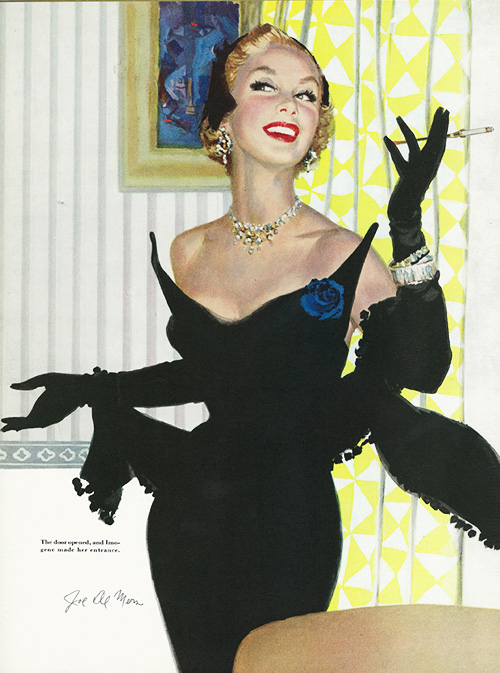
“The door opened, and Imogene made her entrance.” Did she ever! Move over, Beyoncé—this is the quintessential 1950’s hottie. “He was afraid of being trapped by some gorgeous birdbrain. He forgot that (here comes the title): ‘Clever Women Are Dangerous Too.'” Another lady by Joe De Mers, who looks like she might be a handful.
“The Lady and the Lion” – Perry Peterson
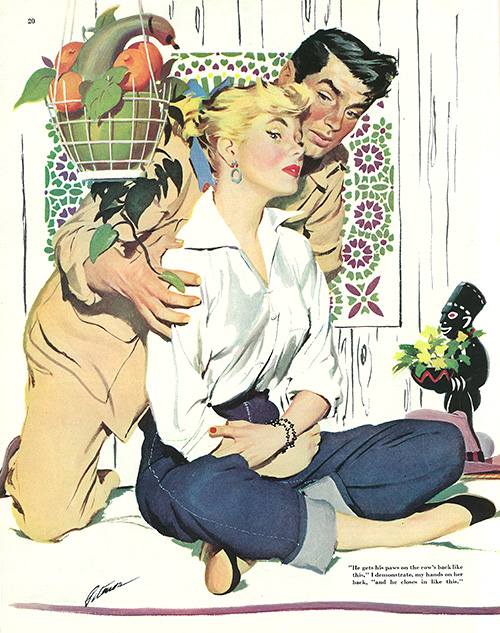
This dark-haired hunk is demonstrating a lion’s moves—for her own safety, of course. “He gets his paws on the cow’s back like this, and closes in like this,’” he says to the stunning blond. Looks like the lion’s paws aren’t the only ones to fear. This is from 1954’s story “The Lady and the Lion,” and the artist was Perry Peterson.
“Second Class Marriage” – Coby Whitmore
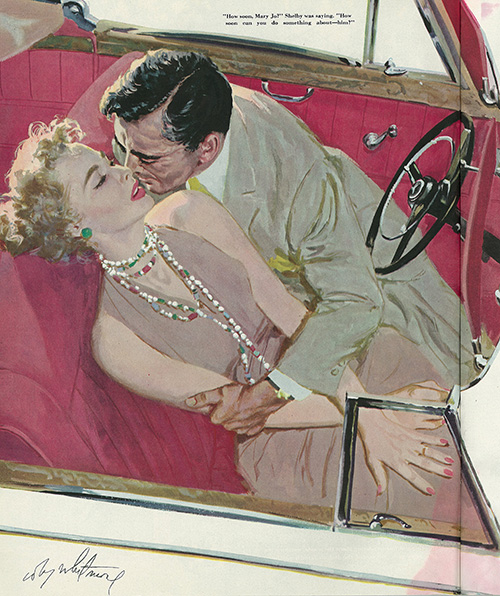
“How soon, Mary Jo?” Shelby was saying. “How soon can you do something about—him?” What the heck was going on in the ’50s? A folksy, down-home magazine cover, but inside… steam heat! Like many Post cover artists, Coby Whitmore did inside illustrations, too. This one comes from the story “Second Class Marriage” in 1955.
“Girl Shy” – Bob Hilbert
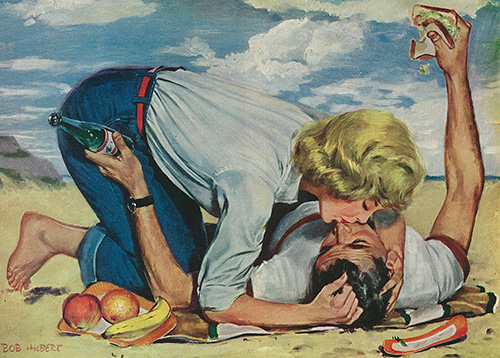
The title of the story was “Girl Shy” from 1955. Well, he may be shy, but she definitely isn’t! Pinning him down with a kiss, she says “Oh, for heaven’s sake, Willy Teeden—here!” Geeze, a guy couldn’t even eat his lunch without some blond nailing him.
“A Man In Her Room” – Edwin Georgi
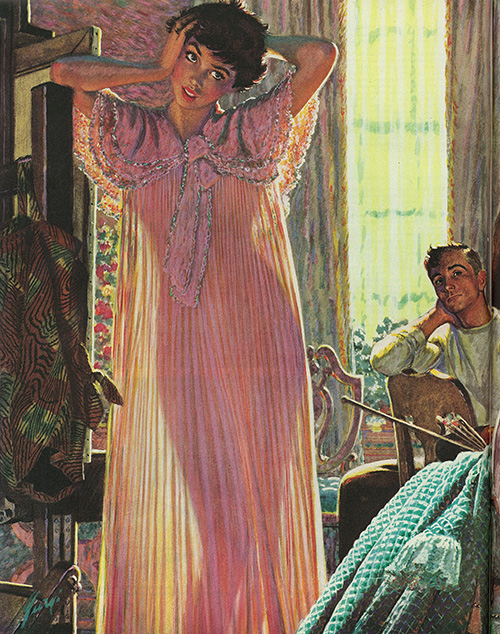
When her fiance and his mother walked in, they were scandalized. They obviously didn’t expect to find “A Man In Her Room.” Her future mother-in-law was not appeased with her assertion, “It’s only Clary.” This illustration ran with the story in 1950. I can guarantee if this ran in the magazine today, we would get letters of complaint from some of our older readers. I don’t know if that means we’ve progressed or regressed. But if these temptresses are getting to you, you can get reprints of these sassy sirens. They’re eye-catching and fun in any room. Contact www:curtispublishing.com for details, or just to browse through more “Leading Ladies.” Click Here